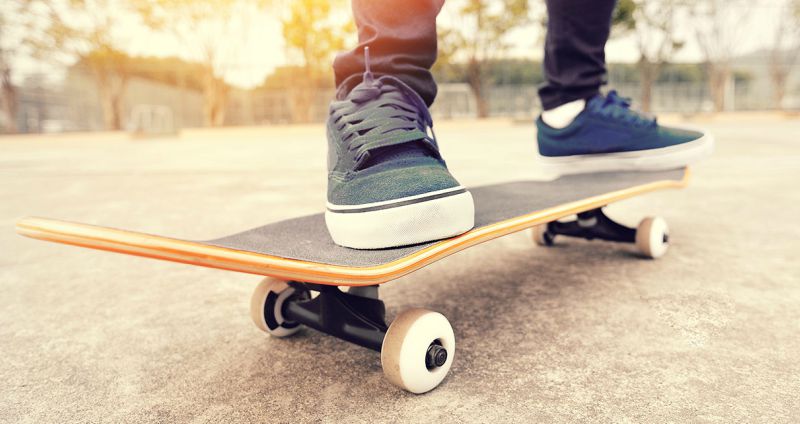
Article by John Matich
I was born in the early 90s, so for me skateboarding was one of the coolest things there was. Every kid I knew had a skateboard, and when they weren’t sinking hours into Tony Hawks Pro Skater, they were down the park trading tricks and messing about on skate ramps.
One of the harder sports to learn, skateboarding requires patience, determination, and guts. Riding the boards isn’t easy, and pulling off something like a kickflip takes many riders years of failure to achieve.
It’s a sport guaranteed to see you injured, and it’s guaranteed to make you look like you have no idea what you’re doing at the start, but it’s one that, if you put in the time, is home to a vibrant community, and an experience of movement and athletic creativity that is unrivalled.
Far from just appealing to kids, skateboarding is something that appeals to people of all ages. It’s a safe bet that if you like snowboarding or surfing, you’ll probably enjoy skateboarding. But when it comes to getting started, it’s not as simple as just walking into a store and picking out any old board.
If you want to become good, you have to pick the right board for you.
What to look for in a skateboard / how to choose a skateboard?
Most people think that the most important thing about a skateboard is how it looks. What colour the grip tape is and whether there’s a unique graphic on the bottom. But, while this matters (as you’re going to want to be riding something you think looks cool), it doesn’t matter nearly as much as specific elements of the skateboard itself.
The length and width of your board are extremely important when it comes to the kind of riding you’re doing. Generally, skateboards come between 28 and 32 inches and are around 7.5 to 8.75 inches wide.
Generally, wider boards perform better than narrower ones, but this isn’t always the case. If you’re a street rider looking to learn some tricks you’re probably going to want a shorter, more narrow board, as it will help with tricks like the kickflip. If you’re wanting to tear up some vert ramps or pools, then a slightly longer, wider board might be more helpful and offer more stability.
The wheelbase of your skateboard is also an important thing to consider. The wheelbase is the distance between trucks, with the average distance ranging from 13 to 15 inches. The distance that is best for you depends on your personal choice and your height. Narrower wheelbases are better for shorter riders, and wider wheelbases are better for taller riders.
What is the best type of skateboard for a beginner?
The best type of skateboard for a beginner is a shortboard. In terms of design, this will be the exact type of skateboard you think of when you draw one to mind. You know, the kind of one Tony Hawk rides. In terms of length and size for a beginner, a longer, wider board will offer more comfort and stability when learning the basics. A board that comes in at roughly 31 x 8 inches would be a good start, although you can even get boards as large as 9 inches in width.
As you’re going to be learning the very basics – riding, pushing, going down ramps, and doing ollies – you’re going to want something that makes all of this easy to get the hang of. Once you’re comfortable doing all of those, you can change it up depending on what you want to do next. For example, going for a narrower board if you want to learn kickflips.
However, if you’re just looking to cruise around – any longboard/cruiser will do. Likewise, for basic, easy fun, a 22-inch board could be a solid option.
Different brands of skateboard
There are many different brands of skateboard that indicate a high level of quality. Examples of these include:
- Almost
- Enuff
- Osprey
- Birdhouse
- Powell
- Creature
But as stated above, the dimensions of the board are more important than any brand or design.
Recommendations
Here are my recommended skateboards for beginners:

